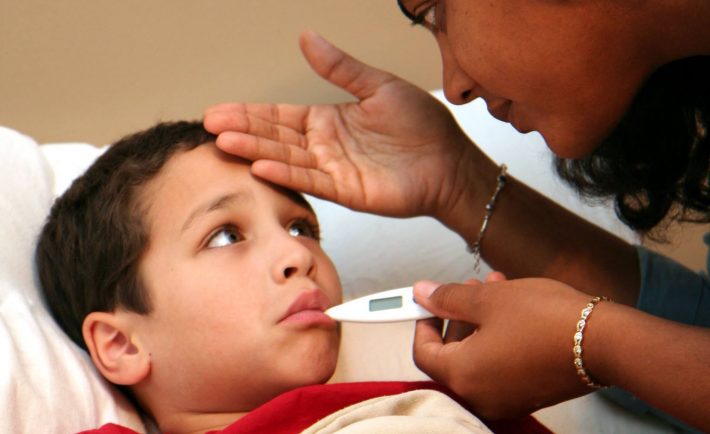Typhoid – Symptoms, Diagnosis, Treatment

Typhoid is a type of infection caused by the bacterium Salmonella typhimurium (S.typhi) which lives in the bloodstream and intestines of humans. The disease is mainly spread due to direct contact/intake of contaminated consumables. Since no animals carry the disease, transmission is mostly from person to person. If left untreated, typhoid can, at times turn out to be fatal. S.typhi attacks the immune system of the host in a way making it weak to fight off infections.
Although it is contacted by consuming contaminated food and water, people suffering from acute illness can also contaminate the surrounding water supply through stool where a significant concentration of this bacteria can be found. Signs and symptoms of the disease usually develop gradually and become prominent only after one to three weeks of exposure to the disease. Here are some of the early symptoms; you need to be aware of-
Fever that goes from low to high almost everyday.
Weakness and fatigue
Sweating
Dry cough
Loss of appetite and weight loss
Rash
Diarrhea or constipation
Muscle aches
Headache
If you ignore the problem and do not seek treatment immediately, the following symptoms might occur-
Lie motionless and exhausted with your eyes half-closed in what’s known as the typhoid state
In addition, life-threatening complications can also develop during this time.
In some situations, signs and symptoms may return after two weeks after the fever has subsided.
Diagnosis
The most common methods used for the diagnosis of typhoid include bone marrow, blood, urine or stool culture tests. A Widal test is also conducted to confirm the same. The samples are usually examined under a microscope to detect the presence of salmonella typhi bacteria. The Widal test apart from being time-consuming can also yield false positives. Hence, a person might be asked to undergo a series of tests if the presence of bacteria is not detected the first time. Hence, a more accurate way is to test the bone marrow sample. Since it takes time and is also painful; this isn’t the most preferred option and is conducted only if the results are inconclusive. In case of confirmation of the disease, other family members also might need to be tested for possible signs of infection.
Apart from the Widal test, a Typhidot test is also conducted at times. This involves the use of dot ELISA kit to detect IgM and IgG antibodies. It takes two days to confirm the results using this test.
Although you must always trust the lab tests, keeping basic medical equipment at home is always recommended. The current Littmann Classic III prices are quite affordable, making the stethoscope much desirable for monitoring heart rate at home.
Treatment
If the diagnosis takes place during the early stages, a course of antibiotics is usually recommended. These are usually taken from 7 to 14 days. Some strains of the bacteria are resistant to such antibiotics. Hence, the type of strain you are infected with is usually diagnosed. Following are the some of the most commonly prescribed antibiotics-
Ciprofloxacin- This is prescribed to non-pregnant adults. A drug called ofloxacin can also be used in its place.
Azithromycin– If the bacteria is resistant to ciprofloxacin, this is usually recommended.
Ceftriaxone– This is an injectable antibiotic and is recommended under more serious situations or children who cannot intake ciprofloxacin. It is always a better idea to buy a box rather than pay individual Dispo van syringe price every time you need to inject the medicine.
These drugs can cause certain side-effects and are not recommended for long-term use.
Drinking Fluids- Drinking fluids can help prevent dehydration which is quite common in case of diarrhea or prolonged fever. In case of severe dehydration, an intravenous supply of fluids might be necessary.
Surgery- A surgery might be required in case of intestines which have become perforated.
Some people, even after completion of treatment face a relapse and experience a return of symptoms. This usually occurs within a week after antibiotic treatment has finished. Although the symptoms during relapse are usually milder and do not last too long, a further antibiotic treatment is still required. You must see your doctor as soon as spot any return of symptoms.
For buying any type of medical equipment, Smart Medical Buyer is the website you can always trust and rely upon. With best quality guarantee and reasonable price, SMB is your one-stop destination for all kinds of medical equipment supplies.
